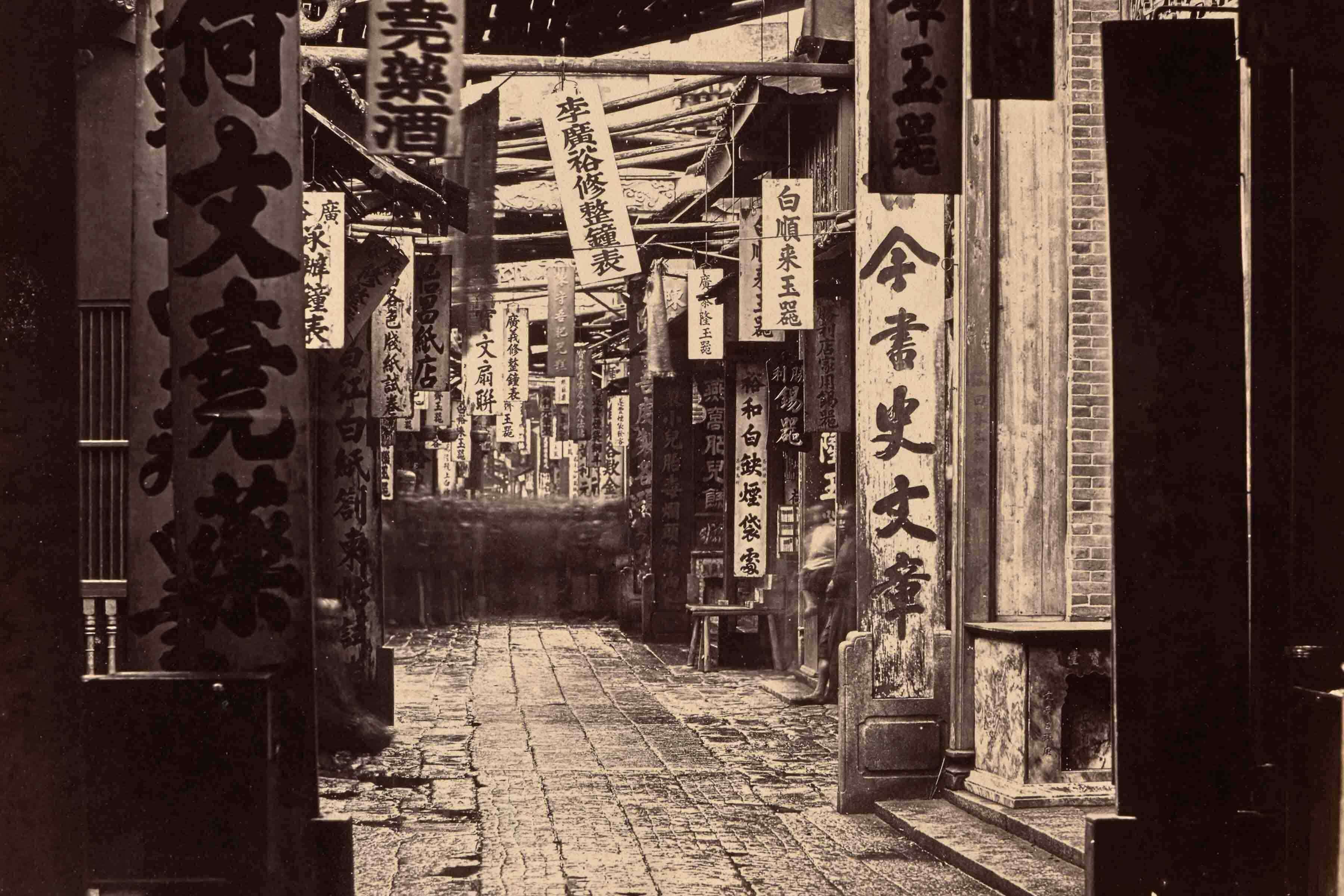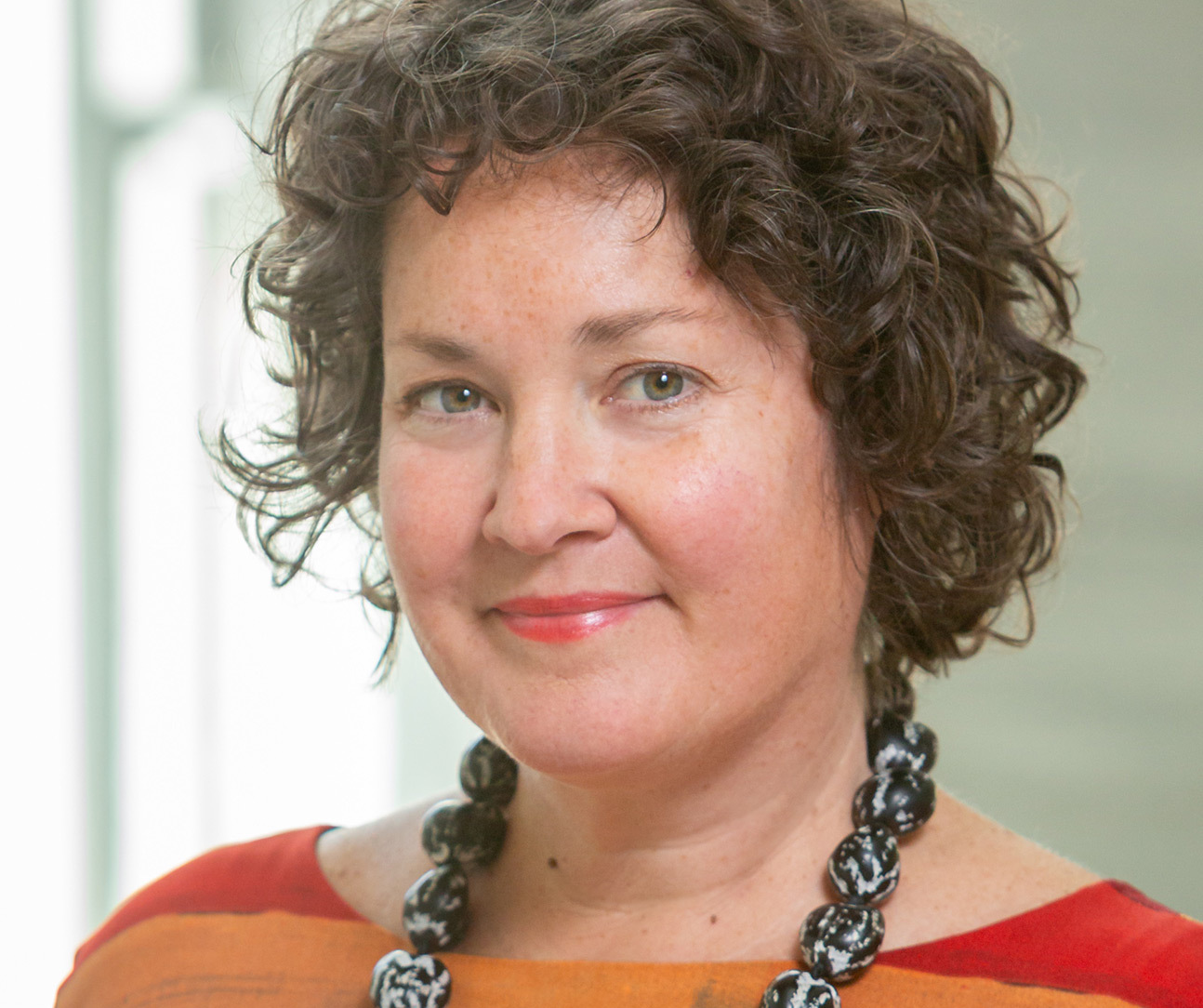ABOVE IMAGE: Felice Beato, Treasury Street, Canton, April 1860. Albumen print. Gift of Howard Corning, Albert Farley Heard Collection, before 1956. PH2.83.
When the camera found its way to China in the 19th century, photographs of merchants, families, urban streetscapes, and busy ports made their way to the US…to become one of the most important and rare collections in the world.
Many of these photographs were originally acquired as contemporary art by Massachusetts merchants who were conducting trade in China and are intimately connected to the institutional history of the Peabody Essex Museum (PEM). Long thought of as an attempt to document a faraway empire, these images are now being reexamined in the exhibition Power and Perspective: Early Photography in China.
With the collection at the center of an exhibition for the first time, visitors can see nearly 130 examples of early photography as PEM’s curators ask us to consider the possible agendas behind each image, as well as the roles the sitters and photo assistants played alongside the credited photographers.
“Photographs historically have been used to tell stories that privilege certain ways of seeing the world, and those stories are functions of power,” said Stephanie Hueon Tung, PEM’s Byrne Family Curator of Photography.

“In this exhibition, we want to think a little bit more about how photographs are not neutral forms of documentation, but always the result of history, politics, and people coming together.”
John Thomson, (1837–1921). Curio Shop, 1868–1872, Albumen print. Peabody Essex Museum. Gift of George J. Harrington Jr., 1993, PH27.26.
Photography’s development as a new form of art and technology in the 19th century coincided with profound changes in the way China engaged with the world. The camera, then large and cumbersome, was introduced to China through war and trade with the West. Dramatic photographs of treaty ports on the edge of the Chinese Empire and a flurry of portraits of Chinese and Western merchants ensued. Collected almost entirely by foreigners, they reflect only a sliver of the 19th-century Chinese experience, said Karina Corrigan, PEM’s Associate Director - Collections and The H.A. Crosby Forbes Curator of Asian Export Art.


“What’s missing gives us a sense of the focused nature of this collection,” said Corrigan. “It tells an important story, but it's not the whole story. These photographs are inextricably linked with the legacy of colonialism in China and not an objective depiction of reality. They are fundamentally about the desires and biases of the photographers and the people who bought these photographs, the people who made them, and the people who collected them.”
John Thomson, Portrait of a Woman, 1868–72. Albumen print. Peabody Essex Museum. Gift of George J. Harrington Jr., 1993. PH27.34.
Scottish-born photographer John Thomson ventured from his Hong Kong studio to photograph Fuzhou. Thomson marketed Foochow and the River Min as a luxury souvenir album to Fuzhou’s foreign residents. Of the original 46 copies of the album, only 10 survive, two of which are in PEM’s collection.
Rounding out the exhibition are a number of China trade paintings from PEM’s internationally significant collection. These are by Chinese artists who were working primarily for a foreign clientele in oil on canvas, reverse painting on glass, and watercolors. Also on view are extraordinary loans from The Metropolitan Museum of Art, MoMA, the Getty, and a number of important private collections.
William Pryor Floyd's photograph of Queen’s Road in Hong Kong speaks to the interaction of photographers, painters, and merchants in the mid-19th century, when newly established photography studios butted up against painting studios. Some of these painters began to advertise themselves as photographers, taking up this new technology to keep ahead of the times and provide the media that their clients desired.
“What I'm hoping is that people think about all the stories that these photographs tell, but then think about the new stories that can come from looking at these photographs with a fresh perspective,” said Tung. “Their power lies not only in what they reveal but in the new narratives that they make possible.”
A contemporary component of the exhibition features emerging Chinese photographers who participated in a 3-month-long virtual collaboration. Participants were asked to interrogate the historic aspects of PEM’s collection and give their own interpretation of these historic works. The works generated — from images about the land to explorations of gender and the body — offer personal insights into China today.
Notes Tung, “The exhibition asks viewers to do the same: to slow down and look closely at all images and think about the perspectives of those who shaped them. With cameras in all of our pockets today and a hypersensitive focus on social media, this is an opportunity to think more deeply about our casual snaps and what they say about us all.”

Power and Perspective: Early Photography in China is on view through April 2, 2023 and is organized by the Peabody Essex Museum. The exhibition is made possible by the generosity of Dr. Edward G. Tiedemann Jr., the Richard C. von Hess Foundation, and the E. Rhodes and Leona B. Carpenter Foundation. Additional generous support was provided by Stephan Loewentheil, Henry Birdseye Weil and Ann Uppington, Xiaohua Zhang and Quan Zhou, the Lee and Juliet Folger Fund, the Blakemore Foundation, Robert and Bobbie Falk and two anonymous donors. Thank you to PEM supporters Carolyn and Peter S. Lynch and The Lynch Foundation and the individuals who support the Exhibition Incubation Fund: Jennifer and Andrew Borggaard, James B. and Mary Lou Hawkes, Kate and Ford O'Neil, and Henry and Callie Brauer. We also recognize the generosity of the East India Marine Associates of the Peabody Essex Museum. Follow along on social media using #PEMPerspective.
Keep exploring
Blog
Reunited in the galleries
6 min read

Blog
The Huang Legacy
6 min read

Blog
Out of the shadows, into the light
5 min read

Collection
Chinese Art


